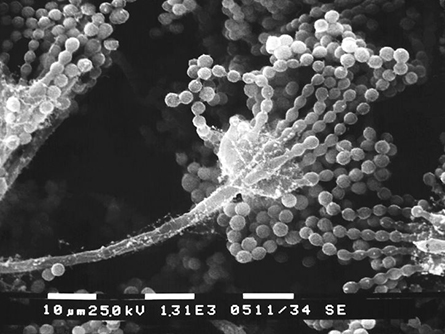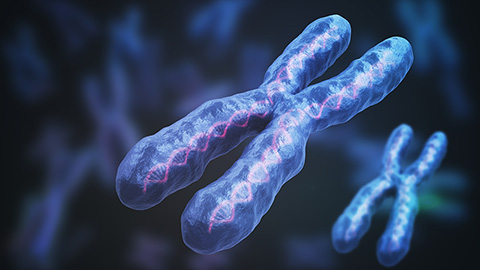A mold’s dangerous responses to its environment
Aflatoxins are among the most dangerous of natural products. At a high dose, the toxins can cause fatal liver failure; at lower doses, by forming adducts with guanine bases in DNA, they can cause mutations that lead to liver cancer.

The toxins are made by filamentous fungi in the Aspergillus family found in soil and are able to colonize the grains and seeds that constitute many of the world's most important food crops. Aspergilli don't need aflatoxins to survive; they activate aflatoxin synthesis in response to environmental conditions, especially heat and moisture. Since hotter days are coming worldwide, researchers would like to find strategies to reduce aflatoxin production.
The genome of Aspergillus flavus, the chief culprit in introducing aflatoxin to human and animal food supplies, first was sequenced in 2006. But there's a difference between knowing what sequences are in a genome and knowing what they do; many sections of the A. flavus genome have not been annotated, meaning that researchers have had little insight into their function.
In a recent article in the journal Molecular & Cellular Proteomics, researchers at the Fujian Agriculture and Forestry University in China, led by Mingkun Yang, report on a proteogenomic analysis of A. flavus. By using the whole fungal genome instead of only its known coding sequences as the reference database to identify peptides detected through mass spectrometry, the team discovered over 700 new protein-coding genes.
"The authors provide a significant improvement to the genome annotation in Aspergillus and demonstrate the use of proteogenomics as a tool especially in organisms lacking high-quality genome annotations," one anonymous peer reviewer wrote.
Researchers cultured the fungus under cold, salty and oxidative stress conditions to maximize phenotypic variability, and they were rewarded: The fungi expressed a smorgasbord of proteoforms, including over 200 new-to-science splice variants, some single-amino-acid variants and a few unexpected intergenic peptides. In follow-up quantitative PCR experiments, the researchers observed that stressful conditions substantially affected the expression of some of the new genes.
Based on homology to other, better-annotated proteins in the literature, the authors think that they may have identified new metabolic enzymes, signaling proteins and stress response factors. They have not yet determined whether any of the new genes are involved in aflatoxin production.
According to the researchers, follow-up studies of the new protein-coding genes and when and where they are expressed may improve our understanding of when and why aflatoxin is produced.
Enjoy reading ASBMB Today?
Become a member to receive the print edition four times a year and the digital edition monthly.
Learn moreGet the latest from ASBMB Today
Enter your email address, and we’ll send you a weekly email with recent articles, interviews and more.
Latest in Science
Science highlights or most popular articles

Bacteriophage protein could make queso fresco safer
Researchers characterized the structure and function of PlyP100, a bacteriophage protein that shows promise as a food-safe antimicrobial for preventing Listeria monocytogenes growth in fresh cheeses.

Building the blueprint to block HIV
Wesley Sundquist will present his work on the HIV capsid and revolutionary drug, Lenacapavir, at the ASBMB Annual Meeting, March 7–10, in Maryland.

Gut microbes hijack cancer pathway in high-fat diets
Researchers at the Feinstein Institutes for Medical Research found that a high-fat diet increases ammonia-producing bacteria in the gut microbiome of mice, which in turn disrupts TGF-β signaling and promotes colorectal cancer.

Mapping fentanyl’s cellular footprint
Using a new imaging method, researchers at State University of New York at Buffalo traced fentanyl’s effects inside brain immune cells, revealing how the drug alters lipid droplets, pointing to new paths for addiction diagnostics.

Designing life’s building blocks with AI
Tanja Kortemme, a professor at the University of California, San Francisco, will discuss her research using computational biology to engineer proteins at the 2026 ASBMB Annual Meeting.

Cholesterol as a novel biomarker for Fragile X syndrome
Researchers in Quebec identified lower levels of a brain cholesterol metabolite, 24-hydroxycholesterol, in patients with fragile X syndrome, a finding that could provide a simple blood-based biomarker for understanding and managing the condition.

